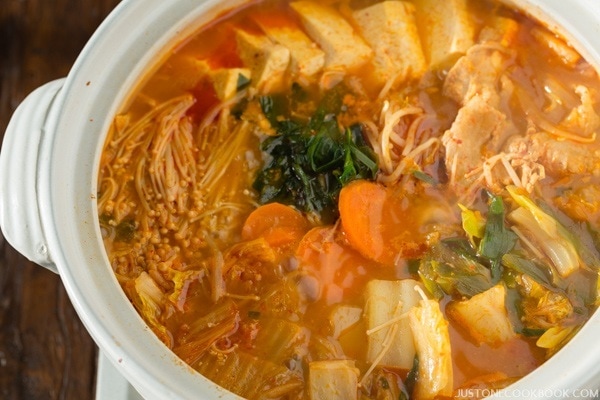
One of Korean dishes that became popular in Japan was Kimchi Jjigae, Korean Stew.
Kimchi Jjigae was introduced to Japan but after some time, the Japanese people adjusted the flavors to their liking (less spicy) and added more vegetables to this dish that are not used in Kimchi Jjigae. Also, Japanese use a big donabe for this dish and treat it like a nabe (hot pot) instead of a single serving Korean stew.
Each household makes this dish differently, but here are some of “general” changes that I could think of:
Ingredients
- Just like other hot pot dishes, napa cabbage leaves are added to Kimchi Nabe in addition to kimchi. Kimchi Jjigae includes napa cabbage kimchi but does not include raw napa cabbage leaves.
- Typical hot pot ingredients are added to Kimchi Nabe, including napa cabbage, enoki mushrooms, Tokyo negi (leeks), shiitake mushrooms, carrots, shirataki noodles, deep-fried tofu, and other hot pot ingredients.
- One thing that Kimchi Nabe does not usually include, but Kimchi Jjigae sometimesincludes is onion. Onion is not a common vegetable to add in Japanese hot pot (but we put green onion/long onion/Tokyo negi).
- For majority of Kimchi Nabe enjoyed in Japan, (Japanese) miso is added to the broth for more savory umami flavors and less intense spiciness.
- At the end of meal (we call Shime, 〆), Japanese people like to put rice or udon noodles (sometimes ramen/Chanpon noodles) in Kimchi Nabe.
Cooking Method
- To make Kimchi Jjigae, aged kimchi is used and it’s cooked with meat first to remove some pungency before adding broth. The Japanese kimchi sold in Japan is not as pungent and spicy as one in Korea; therefore, kimchi is often added directly to broth of Kimchi Nabe.
- Ingredients are added to Kimchi Nabe in an organized way so that each ingredient stays in one location (think of a slice of pie) and avoids mixing up with other ingredients.
How To Serve
- Unlike Kimchi Jjigae that is served in a single pot, Kimchi Nabe is cooked in a largedonabe, Japanese earthenware pot, and served at the table.
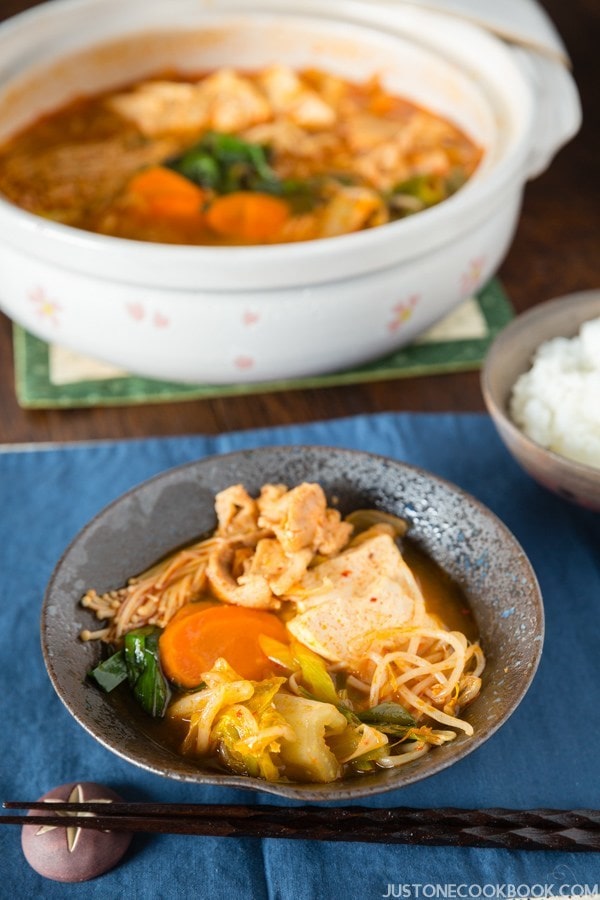
MY KIMCHI NABE
Author: Namiko Chen
Serves: 3-4
Ingredients
- 1 lb. (500 g) napa cabbage kimchi, cut if necessary
- Handful bean sprouts
- ½ large onion
- ½ to 1 pack medium firm tofu
- 5-6 napa cabbage leaves
- 1 Tokyo negi (or 3 green onions/scallions)
- ⅓ carrot
- 3 stalks garlic chives, Asian/Chinese chives, or Nira (different from chives used for garnish)
- 1 pack enoki mushrooms
- .8 lb (400 g) thinly sliced pork belly or pork loin
- 1 Tbsp. sesame oil
- 4 cups (960 ml) dashi (ingredients & recipe below) or chicken broth (hope you try making with dashi)
Seasonings
- 1 Tbsp. sake
- 1 Tbsp. gochujang
- 1 tsp. gochugal (Korean pepper flakes)
- 1 Tbsp. sugar
- 4 Tbsp. (60 ml) Kimchi juice
- 1 Tbsp. soy sauce
- 1 Tbsp. miso (I use awase miso)
- ½ tsp. kosher salt (1/4 tsp. table salt)
For Dashi
- ¼ cup (12 g) iriko (dried baby sardines/anchovies)
- .4 oz (12 g) kombu (about 3x4")
- 4 cups (960 ml) water
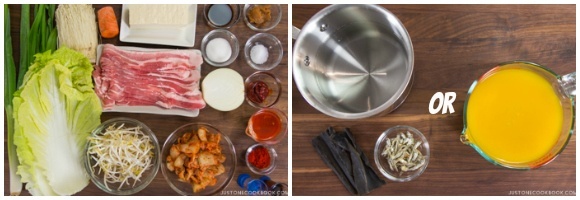
Instructions
Make Dashi:
- This is an extra step and not everyone follows this method, but I highly recommend to remove the head and guts from the anchovies to reduce the bitter flavor in dashi.
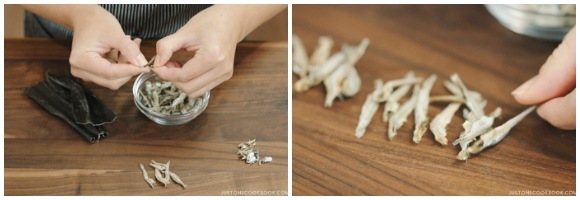
- Clean the kombu with damp cloth. In a small saucepan, put 4 cups water, kombu, and anchovies.
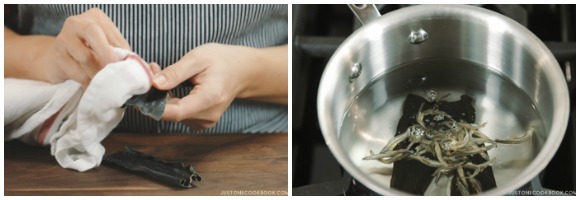
- Bring it to boil on low heat. It’s best to slowly infuse water with kombu and anchovies. Once boiling, cover and keep on low heat and simmer for 10 minutes.
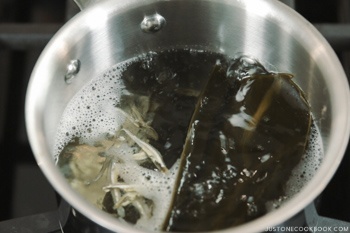
- Once you are done simmering dashi, strain through a fine sieve. Discard anchovies and kombu (Or make candied anchovies and simmered kombu (cook with soy sauce + sake + mirin/sugar)), and set aside the dashi.
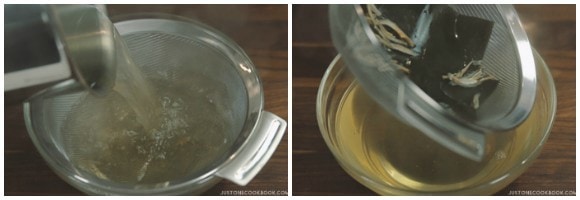
Prepare Ingredients:
- Meanwhile start prepping ingredients. Thinly slice onion. Cut tofu into small blocks.
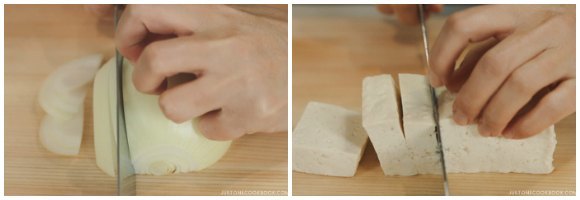
- Cut napa cabbage into 2” (5 cm) pieces widthwise (cut from bottom to leafy side). The bottom part of napa cabbage is thicker so cut these pieces into smaller pieces lengthwise (See how I do it in the video).
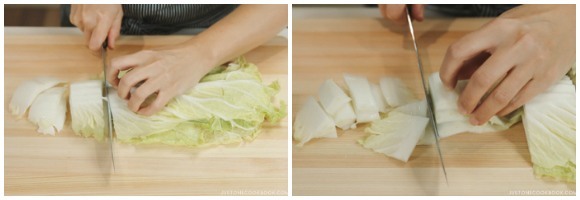
- Slice the Tokyo Negi (or green onions/scallions) diagonally into ½“ (1.3 cm) pieces and slice the carrot diagonally into ¼” (0.6 mm).
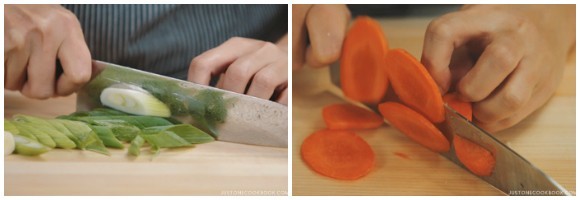
- Cut garlic chives into 2” (5 cm) pieces. Discard the bottom of enoki mushrooms and loosen them up.
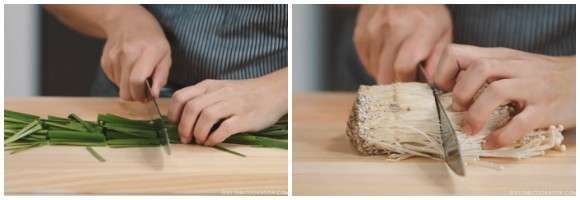
- Rinse bean sprouts and place all the vegetable ingredients on a plate. Cut the sliced pork belly into 2” (5 cm) pieces and set aside.
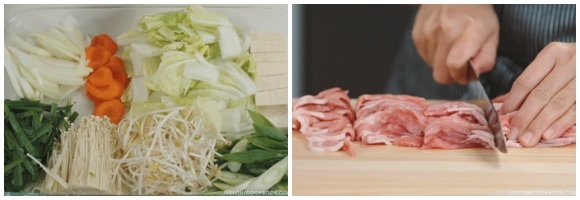
Make Kimchi Nabe:
- In a large donabe (4-5 serving) or pot, heat 1 Tbsp. sesame oil over medium low heat and add the sliced pork belly. Stir fry the meat until no longer pink.
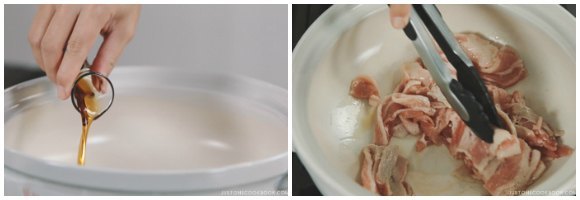
- Add kimchi and onion and stir fry for 5 minutes.
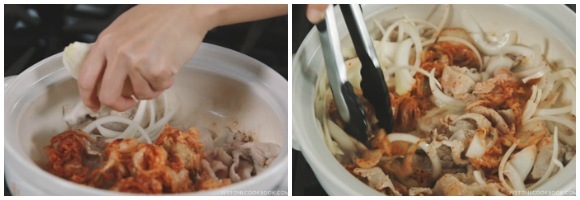
- Then add 1 Tbsp. sake and 1 Tbsp. gochujang.
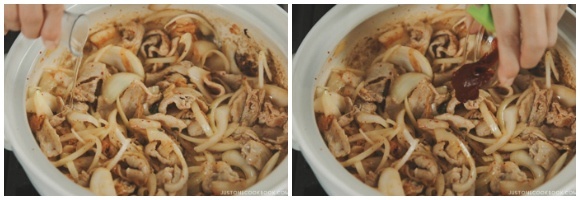
- Add 1 tsp. gochugaru and 1 Tbsp. sugar and mix it all together.
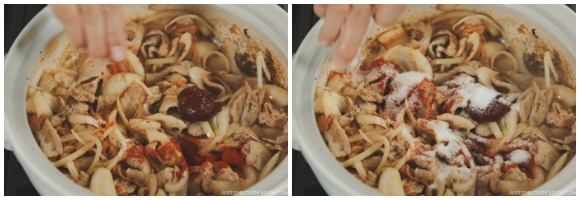
- Add kimchi juice and dashi and make sure it’s mixed evenly.
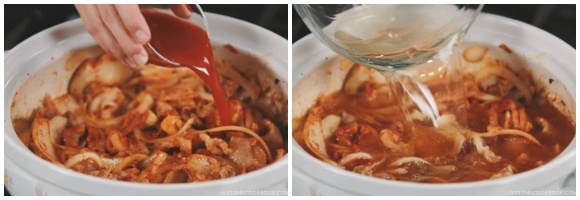
- Cover and bring to boil. Once boiling, reduce heat to low and cook for 5 minutes.
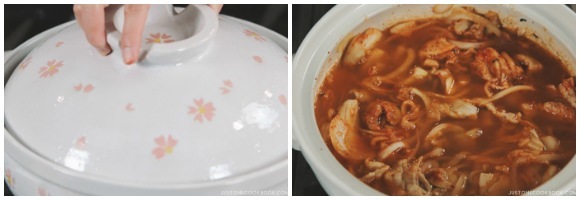
- Add 1 Tbsp. soy sauce and 1 Tbsp. miso. Mix all together and make sure the miso is completely dissolved.
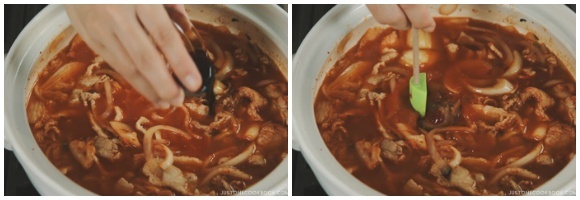
- Add the rest of ingredients and cover to cook on medium heat for 10 minutes, or until all the ingredients are tender.
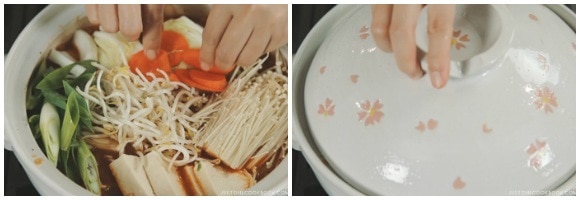
- Taste the soup and add kosher salt if necessary (I added about ½ tsp). Each miso has different saltiness so you really need to taste the soup to adjust the flavor.
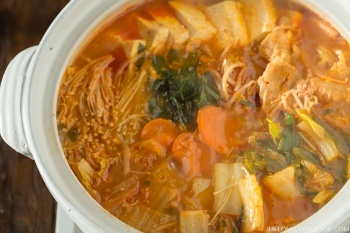





Комментариев нет:
Отправить комментарий